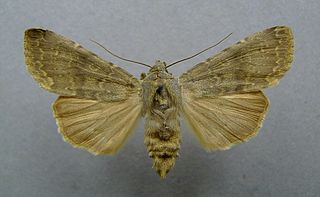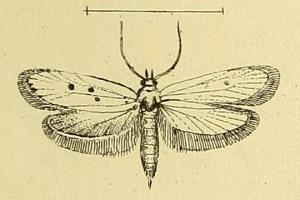
Algeria, officially the People's Democratic Republic of Algeria, is a country in North Africa. Algeria is bordered to the northeast by Tunisia; to the east by Libya; to the southeast by Niger; to the southwest by Mali, Mauritania, and Western Sahara; to the west by Morocco; and to the north by the Mediterranean Sea. It is considered part of the Maghreb region of North Africa. It has a semi-arid geography, with most of the population living in the fertile north and the Sahara dominating the geography of the south. Algeria covers an area of 2,381,741 square kilometres (919,595 sq mi), making it the world's tenth largest nation by area, and the largest nation in Africa, more than 200 times as large as the continent's smallest country, The Gambia. With a population of 44 million, Algeria is the tenth-most populous country in Africa, and the 32nd-most populous country in the world. The capital and largest city is Algiers, located in the far north on the Mediterranean coast.

The Algerian War was a major armed conflict between France and the Algerian National Liberation Front (FLN) from 1954 to 1962, which led to Algeria winning its independence from France. An important decolonization war, it was a complex conflict characterized by guerrilla warfare and war crimes. The conflict also became a civil war between the different communities and within the communities. The war took place mainly on the territory of Algeria, with repercussions in metropolitan France.

French Algeria, also known as Colonial Algeria, was the period of Algerian history when the country was a colony and later an integral part of France. French rule in the region began after the successful French invasion of Algeria and lasted until the end of the Algerian War leading to its independence in 1962. After being a French colony from 1830 to 1848, Algeria was a part of France from 4 November 1848 when the Constitution of French Second Republic took effect until its independence on 5 July 1962.

The Algeria national football team represents Algeria in men's international football, and is governed by the Algerian Football Federation. The team plays their home matches at the 5 July Stadium in Algiers and Miloud Hadefi Stadium in Oran. Algeria joined FIFA on 1 January 1964, a year and a half after gaining independence. They are the current champions of the FIFA Arab Cup.

The small dusty wave is a moth of the family Geometridae first described by Franz von Paula Schrank in 1802. It is found throughout Western, Central and Northern Europe. In the north, its range extends as far as Denmark and southern Scandinavia. In the east its range extends as far as Russia. Idaea seriata is replaced by the subspecies Idaea seriata canteneraria, from the north-east of Spain and the central and eastern Mediterranean to the Crimean peninsula, while the western Mediterranean and the Balearic Islands are inhabited by the sister species Idaea minuscularia. Outside Europe it is found in eastern Algeria, Tunisia, Turkey, Cyprus, the Caucasus and the northwest of Transcaucasia. In Morocco and western Algeria, it is replaced by the sister species Idaea minuscularia. In the British Isles it is common in England and Wales but is only found in the eastern half of Scotland and it is rare in Ireland.

The lackey moth is a moth in the family Lasiocampidae. It was first described by Carl Linnaeus in his 1758 10th edition of Systema Naturae. It is common across southern Britain and central Europe. Malacosoma species are notable for their caterpillars which are brightly coloured and form silken tents to regulate their temperature. Malacosoma neustria caterpillars are brown with blue, orange and white stripes. The adults are a fairly uniform brown. The larvae feed mainly on trees and shrubs from within their tents.
Events from the year 1827 in France.

Heliothis peltigera, also known as the bordered straw, is a species of moth of the family Noctuidae.

Cilix glaucata, the Chinese character, is a moth of the family Drepanidae. It was first described by the Italian physician and naturalist, Giovanni Antonio Scopoli in his 1763 Entomologia Carniolica. It is found in Europe, Asia Minor and North Africa.

Theresimima is a genus of moths. T. ampellophaga, the vine bud moth, is a moth of the family Zygaenidae. It is found from Algeria, Spain and southern France through most of southern Europe to the northern coast of the Black Sea. In the north, it ranges up to Hungary and Slovakia and in the east, the range extends to the southern part of European Russia, the western Caucasus and Transcaucasia, through Turkey, Lebanon and Syria to Israel.

Rhyacia lucipeta, the southern rustic, is a moth of the family Noctuidae. It is found in Morocco, Algeria, the Pyrenees, the mountains of central Europe, Italy, the Balkans, Turkey, the Caucasus, Transcaucasia and Iraq.
Micropterix algeriella is a species of moth belonging to the family Micropterigidae. It was described by Émile Louis Ragonot in 1889 and is endemic to Algeria.

Micropterix conjunctella is a species of moth belonging to the family Micropterigidae. It was described by John Heath in 1986, and is endemic to the type locality at Skikda in Algeria.
Pterophorus ischnodactyla is a moth of the family Pterophoridae. It is known from South Africa, Bahrain, Oman, Yemen, Iraq, Israel, Lebanon, Syria, Turkey, Pakistan, Mongolia, Libya, Algeria, Ukraine and southern Europe.

Ethmia quadrinotella is a moth in the family Depressariidae. It is found in Greece, Turkey, Armenia, Syria, the Palestinian Territories, Iran, Iraq, Afghanistan, north-western Karakoram, Bahrain, Arabia, Tunisia, Algeria, Egypt, Morocco, Cape Verde and northern Sudan.

Eucrostes indigenata is a moth of the family Geometridae first described by Charles Joseph Devillers in 1789. It is found in the Mediterranean region, inland up to North Macedonia and Hungary. Subspecies lanjeronica is found in southern Spain and Algeria.

Eretmocera is a genus of moths in the family Scythrididae.

Gaisler's long-eared bat is a species of bat in the genus Plecotus. It is a medium-sized grayish-brown and found in Morocco, Algeria, Libya, and Tunisia.












